#The Forest Way
Text
"In an unprecedented step to preserve and maintain the most carbon-rich elements of U.S. forests in an era of climate change, President Joe Biden’s administration last week proposed to end commercially driven logging of old-growth trees in National Forests.
Secretary of Agriculture Tom Vilsack, who oversees the U.S. Forest Service, issued a Notice of Intent to amend the land management plans of all 128 National Forests to prioritize old-growth conservation and recognize the oldest trees’ unique role in carbon storage.
It would be the first nationwide amendment to forest plans in the 118-year history of the Forest Service, where local rangers typically have the final word on how to balance forests’ role in watershed, wildlife and recreation with the agency’s mandate to maintain a “sustained yield” of timber.
“Old-growth forests are a vital part of our ecosystems and a special cultural resource,” Vilsack said in a statement accompanying the notice. “This clear direction will help our old-growth forests thrive across our shared landscape.”
But initial responses from both environmentalists and the logging industry suggest that the plan does not resolve the conflict between the Forest Service’s traditional role of administering the “products and services” of public lands—especially timber—and the challenges the agency now faces due to climate change. National Forests hold most of the nation’s mature and old-growth trees, and therefore, its greatest stores of forest carbon, but that resource is under growing pressure from wildfire, insects, disease and other impacts of warming.
Views could not be more polarized on how the National Forests should be managed in light of the growing risks.
National and local environmental advocates have been urging the Biden administration to adopt a new policy emphasizing preservation in National Forests, treating them as a strategic reserve of carbon. Although they praised the old-growth proposal as an “historic” step, they want to see protection extended to “mature” forests, those dominated by trees roughly 80 to 150 years old, which are a far larger portion of the National Forests. As old-growth trees are lost, which can happen rapidly due to megafires and other assaults, they argue that the Forest Service should be ensuring there are fully developed trees on the landscape to take their place...
The Biden administration’s new proposal seeks to take a middle ground, establishing protection for the oldest trees under its stewardship while allowing exceptions to reduce fuel hazards, protect public health and safety and other purposes. And the Forest Service is seeking public comment through Feb. 2 (Note: That's the official page for the proposed rule, but for some reason you can only submit comments through the forest service website - so do that here!) on the proposal as well as other steps needed to manage its lands to retain mature and old-growth forests over time, particularly in light of climate change.
If the Forest Service were to put in place nationwide protections for both mature and old-growth forests, it would close off most of the National Forests to logging. In an inventory concluded earlier this year in response to a Biden executive order, the Forest Service found that 24.7 million acres, or 17 percent, of its 144.3 million acres of forest are old-growth, while 68.1 million acres, or 47 percent, are mature."
-via Inside Climate News, December 20, 2023
-
Note: This proposed rule is current up for public comment! If you're in the US, you can go here to file an official comment telling the Biden administration how much you support this proposal - and that you think it should be extended to mature forests!
Official public comments really DO matter. You can leave a comment on this proposal here until February 2nd.
#united states#us politics#conservation#climate change#sustainability#forests#old growth forest#national forest#carbon emissions#climate action#climate crisis#forest service#biden#biden administration#public comment#good news#hope#it took me soooo long to hunt down the actual public comment link#by which I mean like 10 minutes but like#that's too long! especially considering I am way better at navigating language and bureaucratic websites like this#than A LOT of people#why tf can't you just comment on the Official Website For Public Commenting?#aka regulations.gov#baffling#anyway the good news is I did find it so pls do go ahead and submit a comment if you can
3K notes
·
View notes
Text
Conservationists from India win The Habitats Trust grant for their ground breaking work
The rainforest canopy in Wayanad, Kerala, is a world unto itself, brimming with biodiversity. While climate change is threatening these canopies, the Gurukula Botanical Sanctuary in Wayanad (GBS), a success story on conservation of rare and endangered plant species of the Western Ghats, steps in with an ex-situ conservation strategy. The community of horticulturalists, naturalists and educators,…
View On WordPress
#Ashoka Trust for Research and Ecology#black-bellied tern#Bombay Natural History Society#conservation#Gurukula Botanical Society#HCL Foundation#Indian skimmer#IUCN list#Kiran Nadar Museum of Art#Roshni Nadar Malhotra#The Forest Way#The Habitats Trust#Thiruvannamalai
0 notes
Text


So far away
Ensenada, Los Lagos, Chile.
#photography#art#nature photography#landscape photography#photographers on tumblr#astronomy photography#nigth photography#autumn photography#artists on tumblr#travel photography#forest photography#stars photography#adventure#landscapes#los lagos#chile#nature#aesthetics#lensblr#galaxy#astronomy#milky way#patagonia#south america#sky#nigth sky
1K notes
·
View notes
Text
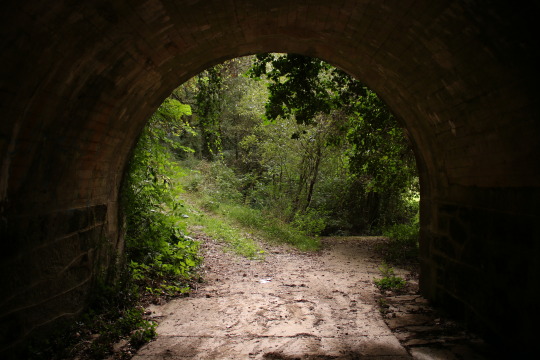
#Túnel da Sionlla#Compostela#25-08-23#photography#photo#photographers on tumblr#aesthetic#aesthetics#galiza#nature#tunnel#charioscuro#shadow#frame#trees#forest#landscape#liminal#liminal spaces#way
867 notes
·
View notes
Text
None Of You Know What Haiku Are
I'm going to preface this by saying that i am not an expert in ANY form of poetry, just an enthusiast. Also, this post is... really long. Too long? Definitely too long. Whoops! I love poetry.
If you ask most English-speaking people (or haiku-bot) what a haiku is, they would probably say that it's a form of poetry that has 3 lines, with 5, and then 7, and then 5 syllables in them. That's certainly what I was taught in school when we did our scant poetry unit, but since... idk elementary school when I learned that, I've learned that that's actually a pretty inaccurate definition of haiku. And I think that inaccurate definition is a big part of why most people (myself included until relatively recently!) think that haiku are kind of... dumb? unimpressive? simple and boring? I mean, if you can just put any words with the right number of syllables into 3 lines, what makes it special?
Well, let me get into why the 5-7-5 understanding of haiku is wrong, and also what makes haiku so special (with examples)!
First of all, Japanese doesn't have syllables! There's a few different names for what phonetic units actually make up the language- In Japanese, they're called "On" (音), which translates to "sound", although English-language linguists often call it a "mora" (μ), which (quoting from Wikipedia here) "is a basic timing unit in the phonology of some spoken languages, equal to or shorter than a syllable." (x) "Oh" is one syllable, and also one mora, whereas "Oi" has one syllable, but two moras. "Ba" has one mora, "Baa" has two moras, etc. In English, we would say that a haiku is made up of three lines, with 5-7-5 syllables in them, 17 syllables total. In Japanese, that would be 17 sounds.
For an example of the difference, the word "haiku", in English, has 2 syllables (hai-ku), but in Japanese, はいく has 3 sounds (ha-i-ku). "Christmas" has 2 syllables, but in Japanese, "クリスマス" (ku-ri-su-ma-su) is 5 sounds! that's a while line on its own! Sometimes the syllables are the same as the sounds ("sushi" is two syllables, and すし is two sounds), but sometimes they're very different.
In addition, words in Japanese are frequently longer than their English equivalents. For example, the word "cuckoo" in Japanese is "ほととぎす" (hototogisu).
Now, I'm sure you're all very impressed at how I can use an English to Japanese dictionary (thank you, my mother is proud), but what does any of this matter? So two languages are different. How does that impact our understanding of haiku?
Well, if you think about the fact that Japanese words are frequently longer than English words, AND that Japanese counts sounds and not syllables, you can see how, "based purely on a 17-syllable counting method, a poet writing in English could easily slip in enough words for two haiku in Japanese” (quote from Grit, Grace, and Gold: Haiku Celebrating the Sports of Summer by Kit Pancoast Nagamura). If you're writing a poem using 17 English syllables, you are writing significantly more content than is in an authentic Japanese haiku.
(Also not all Japanese haiku are 17 sounds at all. It's really more of a guideline.)
Focusing on the 5-7-5 form leads to ignoring other strategies/common conventions of haiku, which personally, I think are more interesting! Two of the big ones are kigo, a season word, and kireji, a cutting word.
Kigo are words/phrases/images associated with a particular season, like snow for winter, or cherry blossoms for spring. In Japan, they actually publish reference books of kigo called saijiki, which is basically like a dictionary or almanac of kigo, describing the meaning, providing a list of related words, and some haiku that use that kigo. Using a a particular kigo both grounds the haiku in a particular time, but also alludes to other haiku that have used the same one.
Kireji is a thing that doesn't easily translate to English, but it's almost like a spoken piece of punctuation, separating the haiku into two parts/images that resonate with and add depth to each other. Some examples of kireji would be "ya", "keri", and "kana." Here's kireji in action in one of the most famous haiku:
古池や 蛙飛び込む 水の音
(Furu ike ya kawazu tobikomu mizu no oto)
(The old pond —
A frog jumps in
The sound of the water.)
You can see the kireji at the end of the first line- 古池や literally translates to "old pond ya". The "ya" doesn't have linguistic meaning, but it denotes the separation between the two focuses of the haiku. First, we are picturing a pond. It's old, mature. The water is still. And then there's a frog! It's spring and he's fresh and new to the world! He jumps into the pond and goes "splash"! Wowie! When I say "cutting word", instead of say, a knife cutting, I like to imagine a film cut. The camera shows the pond, and then it cuts to the frog who jumps in.
English doesn't really have a version of this, at least not one that's spoken, but in English language haiku, people will frequently use a dash or an ellipses to fill the same role.
Format aside, there are also some conventions of the actual content, too. They frequently focus on nature, and are generally use direct language without metaphor. They use concrete images without judgement or analysis, inviting the reader to step into their shoes and imagine how they'd feel in the situation. It's not about describing how you feel, so much as it's about describing what made you feel.
Now, let's put it all together, looking at a haiku written Yosa Buson around 1760 (translated by Harold G. Henderson)
The piercing chill I feel:
my dead wife's comb, in our bedroom,
under my heel
We've got our kigo with "the piercing chill." We read that, and we imagine it's probably winter. It's cold, and the kind of cold wind that cuts through you. There's our kireji- this translation uses a colon to differentiate our two images: the piercing chill, and the poet stepping on his dead wife's comb. There's no descriptions of what the poet is feeling, but you can imagine stepping into his shoes. You can imagine the pain he's experiencing in that moment on your own.
"But tumblr user corvidcall!" I hear you say, "All the examples you've used so far are Japanese haiku that have been translated! Are you implying that it's impossible for a good haiku to be written in English?" NO!!!!! I love English haiku! Here's a good example, which won first place in the 2000 Henderson haiku contest, sponsored by the Haiku Society of America:
meteor shower . . .
a gentle wave
wets our sandals
When you read this one, can you imagine being in the poet's place? Do you feel the surprise as the tide comes in? Do you feel the summer-ness of the moment? Haiku are about describing things with the senses, and how you take in the world around you. In a way, it's like the poet is only setting a scene, which you inhabit and fill with meaning based on your own experiences. You and I are imagining different beaches, different waves, different people that make up the "our" it mentioned.
"Do I HAVE to include all these things when I write haiku? If I include all these things, does that mean my haiku will be good?" I mean, I don't know. What colors make up a good painting? What scenes make up a good play? It's a creative medium, and nobody can really tell you you can't experiment with form. Certainly not me! But I think it's important to know what the conventions of the form are, so you can appreciate good examples of it, and so you can know what you're actually experimenting with. And I mean... I'm not the poetry cops. But if you're not interested in engaging with the actual conventions and limitations of the form, then why are you even using that form?
I'll leave you with one more English language haiku, which is probably my favorite haiku ever. It was written by Tom Bierovic, and won first place at the 2021 Haiku Society of America Haiku Awards
a year at most . . .
we pretend to watch
the hummingbirds
Sources: (x) (x) (x) (x) (x) (x)
Further reading:
Forms in English Haiku by Keiko Imaoka
Haiku: A Whole Lot More Than 5-7-5 by Jack
How to Write a Bad Haiku by KrisL
Haiku Are Not a Joke: A Plea from a Poet Who Has Had It Up to Here by Sandra Simpson
Haiku Checklist by Katherine Raine
#poetry#haiku#writing#literature#anime life#long post#i want to apologize but i had to get something off my chest#and the thing was. i love haiku#and when i see posts on here about haiku. i get so angy.#well ok i really get more disappointed bc nobody is really engaging with the form on its own terms#anyway i hope you enjoy some of my favorite haiku because theyre in there!!!!!#i didnt really get into the history of haiku. and i also did not get into why i got really into it#but i will say that i was really inspired by Jacob Geller's video A Thousand Ways of Seeing a Forest#which is a lot about translation#(which i mean. as an interpreter AND a poetry-enjoyer. really appealed to me lol)
10K notes
·
View notes
Text

A page from my post-Botw Zelink comic.
Each chapter covers key moments of my headcanon. I don't think my comic is super revolutionary in terms of story because there is so much fan content out there and im super classic and vanilla... but i dont care. I'm having fun creating my own take on what happened.
This project is a time consuming blackhole and I draw it all out of order because I have no discipline whatsoever 😭 😂 It was originally just random black and white pages here and there with no cohesions, like my stand alone illustrations... but the illustrations became pages. The project is basically me fan-servicing my own self. 😂😂
Then it exploded, i've been adding color, cleaning up my panels, pimping the backgrounds.
I still unsure on which platform i will make it available to read. The friends who got my out of my shipping closet are screaming to me to print a fanzine, but i'm lazy hahaha. Might do a patreon eventually, idk.
Oh yeah, this is a panel from the chapter where Zelda and Link go back to Korok forest to put the Master Sword back in it's pedestal...
I'm old, i played the old games. One of my BotW nitpics was that it didnt include the classic moment where the sword rests once again, like in ALttP and OoT. I like traditions okay!!!!
Cheers!!!
#my art#zelink#breath of the wild#tears of the kingdom#legend of zelda#zelda fanart#loz fanart#zelda#botw link#btw Zelda and Link are not a couple YET in that page ho ho#mutual pining#slow burn#princess zelda#botw#korok#korok forest#botw korok#they are so in love#botw fanart#botw zelda#master sword#fan comic#zelda fancomic#They have to be physicaly close when teleporting because WHAT IF it doesnt work otherwise?! 😏#It's the only way to be sure!#What do you think happens next?#It's actually super predictable lol#Koroks are Zelink shippers. I will die on that hill.
504 notes
·
View notes
Text
Burrows End is SO SO good and Aabria is such a master of story telling. This season, despite being genuine DnD vs other systems Aabria has used, hasn't actually seen all that much full blown combat. Like, of course they've fought things throughout, but it's been so much more information hunting and puzzling together all the lore. But this obviously means those scenes we do have such full blown COMBAT with sets so much more important, which was obvious in the reactor....but the bear....so obviously it's been focused on in reference to Tula's reveal, or as a show of how fucked up biology wise this world they live in is and how dangerous it is in the forest.
But it's also Aabria laying such incredibly subtle groundwork. It's showing us "this is possible in this world. This happens. They can get inside of you, burrow into you, and you will be their walking warren. Parasite and host intertwined."
And then we move on...we focus on the secrets of the first stoats and learning of all these human things, and the chipmunks and bear are just fun tidbits to throwback to about how scary and fucked up things are, but no longer relevant.
Last week we heard those tapes, and I thought "that voice change there...the 'they're so sneaky'...was that a first stoat, who we only heard as squeaks, instead speaking through Dr. Wenabocker as he died?"
And I forgot about the bear too.
But the SECOND it was revealed that Wenabocker left, that his body was gone and that Phoebe left too? It all clicked.
The Bear wasn't just a fun, really cool fucked up battle set for an episode, it was incredibly important foreshadowing. The foundation, the trap, the big bad all at once hidden behind a cool, fucked up bear in the second goddamn episode of the season.
#hitting us again and again with “things will die and things will bring you back to life and things will be inside of you keeping you alive”#wenabocker isnt dead#but if any part of him is cognizant enough to know what's happening i bet he wishes he was#wenabocker is the bear and i bet the only way to kill phoebe is to stop his heart and kill him just like they did in ep. 2#aabria my beloved#ive been strolling in this vivid story-forest you made us and walked right into your bear trap#dimension 20#d20 spoilers#dimension 20 spoilers#burrows end#d20 burrow's end#burrows end spoilers#d20 burrow's end spoilers#burrow's end#burrow's end spoilers
1K notes
·
View notes
Text
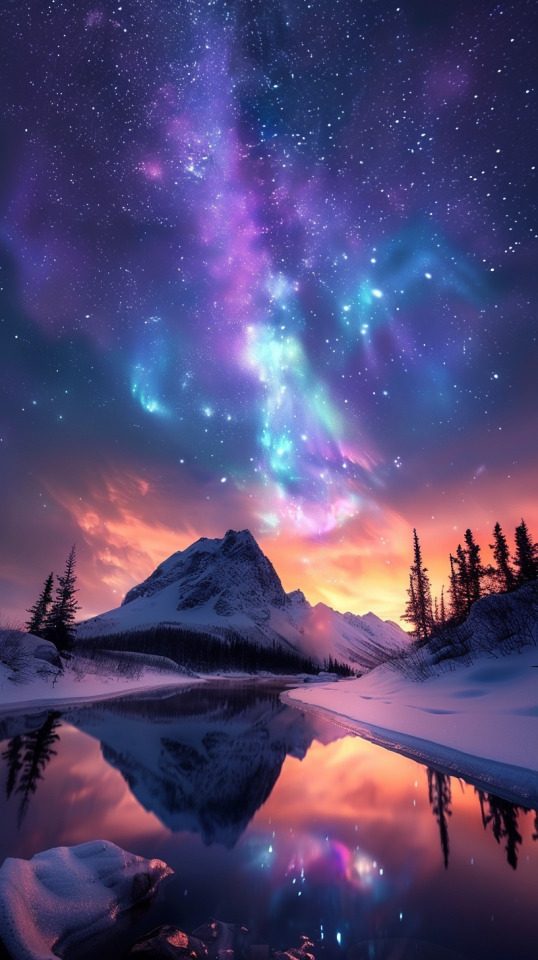


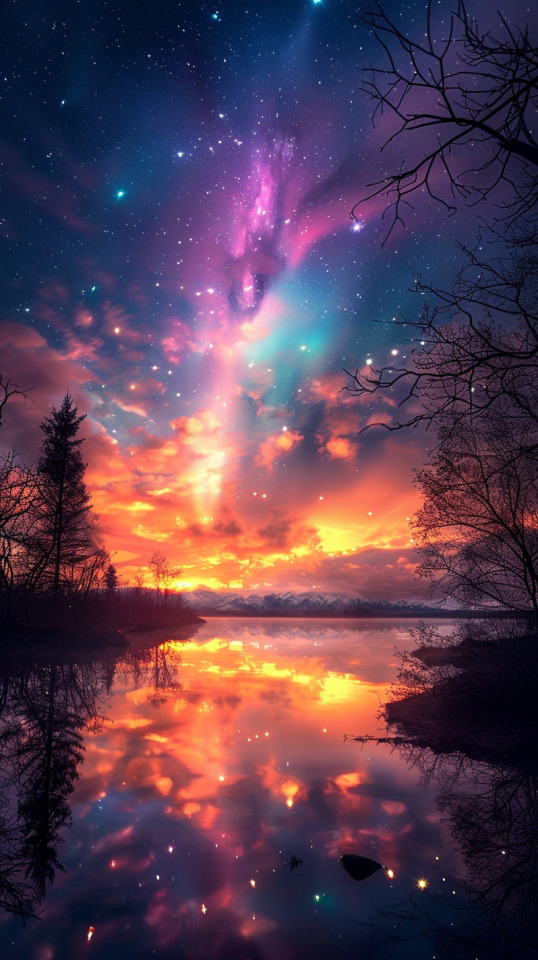

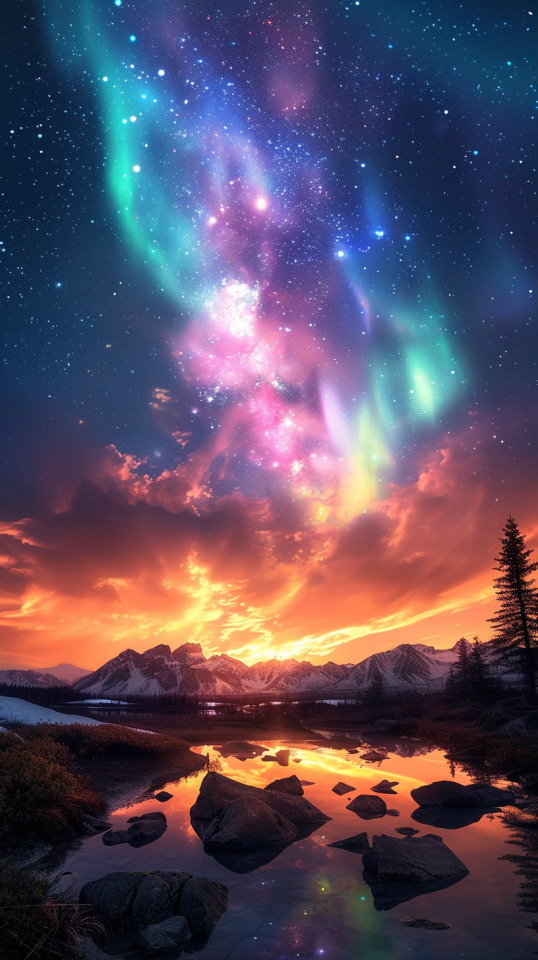
wallpapers 🤍
enjoy
#aurora borealis#phone wallpaper#wallpapers#iphone lockscreens#phone background#astronomy#night#sky#space#stars#nasa#universe#nebula#galaxy#cosmos#milky way#curators on tumblr#aurora#nature#travel#landscape#landscapes#vacation#forest#lake#trees#surreal#nature photography#science#northern lights
530 notes
·
View notes
Text
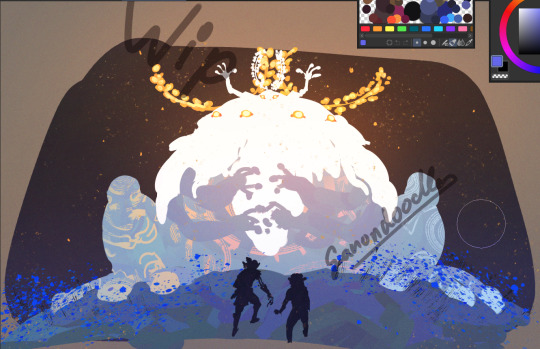
(concept 1)
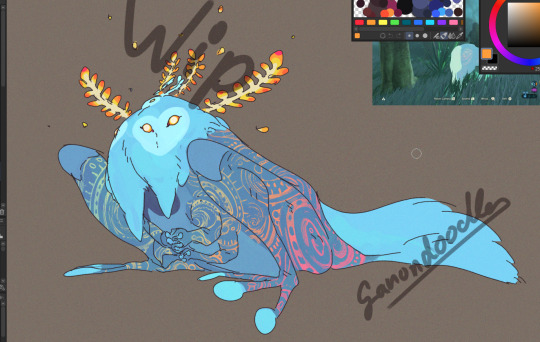
(refined design)
more totk rewritten/botw 2 concept wips
im removing the mayoi (frogs in caves) bc i dont like how satori and its aesthetic was turned from something mysterious and otherwordly to yet another collectable-
so im turnign the frog idea into a single thing living in the underground as a counterpart to satori itself- perhaps it resides in a giant tree growing from the ceiling bc i ASLO didnt like how there was that at first cool looking underground tree with all the rumis (rabbit things) but then it was quite literally nothing (again)
this idea is pretty new so i am still working on the details, im all ears for suggestions :P
#ganondoodles#zelda#art#wip#ganondoodles rewrites totk#botw 2#the first one is a bit off in proportion#im doing another painting with the better ones too#it doesnt talk#bc making something talk immedaitely makes it less mysterious imo#maybe its like underground krogs#and you gotta rescue its spawns#which are smaller frogs more akin to the ones in the game#but its not that many- im reduscing the number of every collectable but make it all more elborate#so less krogs on the surface too- with most of them actually being outside their forest BECAUSE it is poisoned#and some establishing mini forest- in the form of pink blossom trees like the deku tree#like in ww in a way#OMG ... the cool armor set with the satori face and all but its an actual mask and also it attracts rumis that run with you!!!#.. im having too many ideas again
423 notes
·
View notes
Text
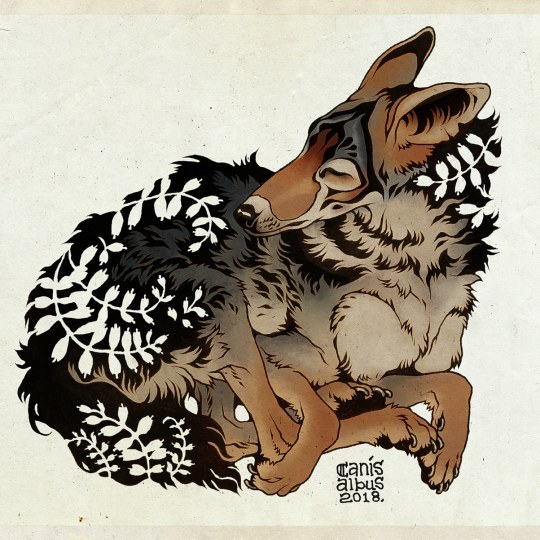
Metsänpeitto
#own art#canisalbus#art#artists on tumblr#coyotes#canine#animals#metsänpeitto means forest's cover#it's a phenomenon in Finnish folklore where people and domestic animals go missing in nature for unexplained reasons#claimed by the woods in a way
6K notes
·
View notes
Text


appreciation for the sheer melancholic fondness in wilson’s gaze at house during what he knows is the last normal interaction they’ll ever have; during the final comparatively trivial rant in which they don’t both have to pretend the world isn’t collapsing beneath their feet
#ITS SO FORLORN GODDAMNIT#it’s the way that he waited a few minutes just to savour the normalcy of it all#acting like his eyes aren’t glazed over as house jibes about hooker innuendos#rsl has to be a sociopath I swear because if this was ME acting out this shakespearen ahh tradgedy…. I would never recover#would literally have to move into the forest in order to contemplate the inevitability of all good things coming to an end#I’m juiced up if you can’t tell. and feeling TOTALLY normal about these fictional middle aged men.#house md#greg house#gregory house#hilson#james wilson#hatecrimes md#house/wilson#robert sean leonard
754 notes
·
View notes
Text


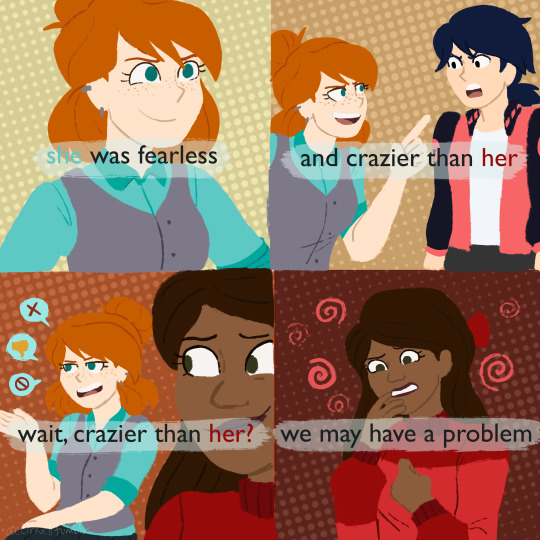

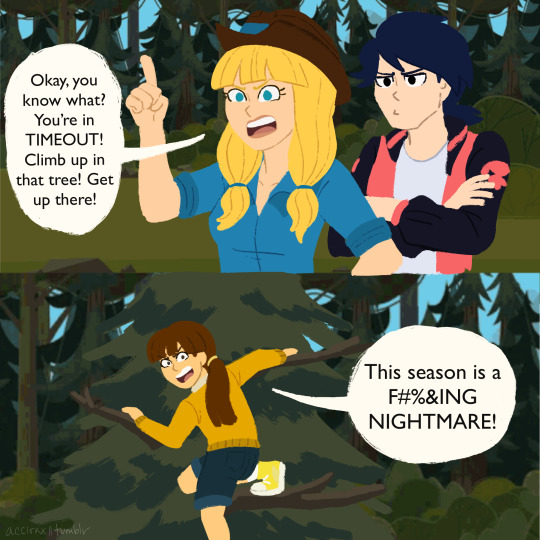
a collection of DCAS memes so far
#disventure camp#dcas#disventure camp spoilers#alec disventure camp#fiore disventure camp#hunter disventure camp#ally disventure camp#tess disventure camp#ellie disventure camp#jake disventure camp#gabby disventure camp#james disventure camp#lake disventure camp#ashley disventure camp#the james one was inspired by a doodle by sadlyglad_ on instagram so please support his work as well!#it's really good especially if you like james x aiden#also all of the forest backgrounds were assets taken from the show i did not draw those myself#why the hell did jake appear three times#he's just the man of the hour i suppose#i started drawing these before episode 6 and thankfully nothing happened to make any of these no longer relevant/true#hopefully i'll have more meme redraw ideas in the future but for now this is all. hehe disventure camp >:)#my art#fanart#comic#also i finally learned how to use the text tool in procreate! wish there was a better way to add outlines though#huntessally
413 notes
·
View notes
Photo

The Power of Friendship
I <3 Umudara
#critical role#uthodurn#umudara#maybe the real friends are the celestial bulls we pointed back toward the destroyed forests along the way
2K notes
·
View notes
Text
Got a little spicy piece 🔥 in the works, my lovelies❤️ Stay tuned for the finished product 😈💋

#wip#ralak x y/n#omatikaya#metkayina#spicy stuff#digital art#na’vi art#na’vi oc#size difference#forest girl#sea beast#heat#rut#avatar the way of water
2K notes
·
View notes
Text

Lil study of a pic I took when visiting my home town
#finch art#watercolour#watercolor#new forest#traditional#not really happy with my paintings but i keep reminding myself i gotta get a lot of bad paintings outta the way in order to get to the good#trying to keep painting over n over without getting disheartened at them not being great yet#the age old struggle
419 notes
·
View notes
Text
ah! im already Excelling at fulfilling my new years desires! ft. a new good thing to list:

hot cocoa on snowy mornings!
#this is already such a good day...#i went for a walk in the snow! it was gorgeous! there was birdsong! there was The Crunch™️#the vibes rn are Immaculate hell fuckin yeah....#and i got the furnace going early enough that its warm in here!#a toasty 63 degrees! i might need to take my sweater off#photos from the bog#new years desires was the best idea ive ever had ngl#instead of guilt and stress and a Requirement. i have nothing but delight#they may be fulfilled! they may not be! its ok either way!#oh... a new Desire arises...#i want to get a shrimple hammock that i can tie between two trees#id like to Lounge in the snowy forest in a cozy little swing#with a book... a thermos of broth... no headphones bc i love nature's ambience...
393 notes
·
View notes